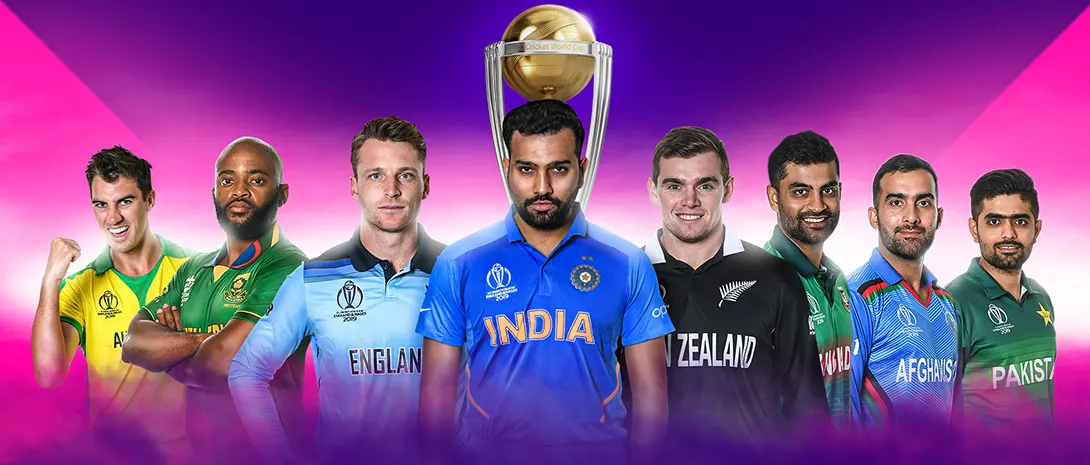
Key Takeaways:
- Cricket World Cup commences on October 5, spotlighting the 50-over format in the sport’s heartland, India.
- T20 cricket has risen significantly in the past decade, challenging the traditional ODI format’s standing.
- The ODI format, while under scrutiny, has its immediate future secured with World Cups planned till 2031.
- Smaller cricketing nations seek more exposure, while fans’ and administrators’ appetite for ODIs is in question.
The ODI Legacy and T20’s Rise
Embarking on October 5, cricket enthusiasts will be engrossed as the World Cup, hosted by India, revives memories of iconic moments like MS Dhoni’s legendary six in 2011. While the shorter, three-hour T20 format has captured a younger demographic with its swift, electrifying matches, it’s the 50-over World Cup that, historically, has been considered the pinnacle of cricketing achievement.
Ready to shine in their Maiden 50-over Cricket World Cup Campaign! 😎
Give it up for our #CWC23 Debutants 😃
𝗠𝗶𝘀𝘀𝗶𝗼𝗻 𝗪𝗼𝗿𝗹𝗱 𝗖𝘂𝗽 𝗕𝗲𝗴𝗶𝗻𝘀 🏟️#TeamIndia pic.twitter.com/Xdm9jdr86x
— BCCI (@BCCI) October 5, 2023
In a landscape where T20 has proliferated extensively, influencing a plethora of lucrative domestic leagues worldwide, the 50-over format, stretching across approximately eight hours, has experienced wavering popularity and engagement.
ODI: Balancing Tradition and Evolution
The ODI (One Day International) format, despite its rich history, is experiencing an identity crisis, oscillating between its foundational place in cricket and the rapid dynamism of T20 games. Notably, last year’s T20 World Cup showcased a mesmerizing India-Pakistan duel, symbolizing the format’s soaring prestige and widespread acceptance, especially with the next event being co-hosted by the U.S., drawing global attention.
Yet, the forthcoming World Cup stands tall, presenting the 50-over format – often seen as the black sheep amidst its T20 and Test counterparts – with a chance to rekindle its charm and relevance to fans worldwide.
Who will top the run charts in CWC23? 🏏
More stats ➡️ https://t.co/rKjyS0CVsJ pic.twitter.com/afPYDnFm3U
— ICC Cricket World Cup (@cricketworldcup) October 5, 2023
Discussions on Format Future and Upcoming World Cups
While numerous debates around the longevity and pertinence of the 50-over format persist, as reported, the ODI’s immediate future appears stable with the cricket administrators keen on preserving the format. It continues to harbor significant importance due to its associated World Cup – a financial and symbolic prize in the cricketing world.
Subsequent World Cups are scheduled for 2027 and 2031, ensuring the format’s survival in the immediate cricketing future. Notably, the next event, to be hosted by South Africa, Zimbabwe, and Namibia, will witness the expansion of teams from 10 to 14, thereby necessitating smaller cricket nations to gain more exposure and enhance their competitive edge.
Fan Engagement and Future Implications
Despite apparent security in its future, the ODI format faces a daunting task to sustain interest and enthusiasm amongst fans, often finding itself eclipsed by the high-adrenaline T20 matches. Reports from India even suggest a subdued excitement for the World Cup, with the nation currently riveted by their commendable performance at the Asian Games in Hangzhou, China.
Good luck to @ImRo45 and the rest of his team as India get ready to host the Cricket World Cup 🇮🇳
The hospitality and love you show me every time I’m there is amazing 💙#CWC23 pic.twitter.com/UUq5hwYVTC
— Drew (@DMcIntyreWWE) October 4, 2023
However, if the hosts and favorites, India, weave a spell of victories, the World Cup could potentially kindle a wave of nostalgia and perhaps, reinvigorate belief in the ODI format’s ability to merge Test cricket’s meticulous strategy with T20’s frenetic energy.
The upcoming World Cup, thus, might either reaffirm the ODI format’s unique charm or further propel debates on its contemporary relevance. Whichever direction the wind blows, 50-over cricket will momentarily bask in undivided attention, offering a nostalgic retreat or a conclusive adieu.



 Premier League
Premier League La Liga
La Liga Bundesliga
Bundesliga Serie A
Serie A Ligue 1
Ligue 1 UCL
UCL



